In October Deb & I were able to free up five days and get away to visit one of our favourite places – California – and more specifically Deb’s favourite spot in California, Huntington Beach, which is located on the Pacific Coast about 40 miles south of Los Angeles along the Pacific Coast Highway.
From a photographer’s perspective The Golden State offers a plethora of opportunities amongst some of the most varied subject material anywhere in the world. We will see but a few of them in this post. The interesting thing about this trip was that for the first time since I was a teen, I didn’t have an SLR or DSLR with me, instead using a mirrorless Fujifilm X-E2 body with an array of six lenses ranging from 8mm to 200mm in focal length. This new Fuji system is arguably one of the best travel camera gear set ups available today as the image quality rivals that of any professional DSLR system and is significantly smaller and lighter, two valuable premiums while travelling. In fact, the X-E2, six lenses and all the associated trinkets (SD cards, Intervalometer, spare batteries and charger) easily fits into my Crumpler Six Million Dollar Home shoulder bag and weighs in at about one third of what the comparable Canon gear weighs. Needless to say, all of the images in today’s post were taken with the X-E2 and I will try to select some images taken with each lens. Although this post is not designed to critically evaluate the Fuji X-mount system, I trust it does give you a flavour of what the camera is capable of, which is impressive, and although it will never replace the Canon gear, it does provide a very capable adjunct to it.
Heading north from LAX along the Pacific Coast Highway you first encounter Marina Del Ray, Los Angeles’ largest marina. On the north side of the marina is the start of Venice Beach which seamlessly runs into the Santa Monica beach and its very famous pier.
The well known Venice Beach Logo staking its claim to the beach.
Venice Beach is one of the most eclectic beaches in the world and attracts people of every conceivable stripe which creates a most unusual beach side community. It is also famous for Muscle Beach which is an outdoor, on the beach, weight training facility started in the 1930’s (just south of the Santa Monica Pier) and relocated to Venice Beach in 1950.
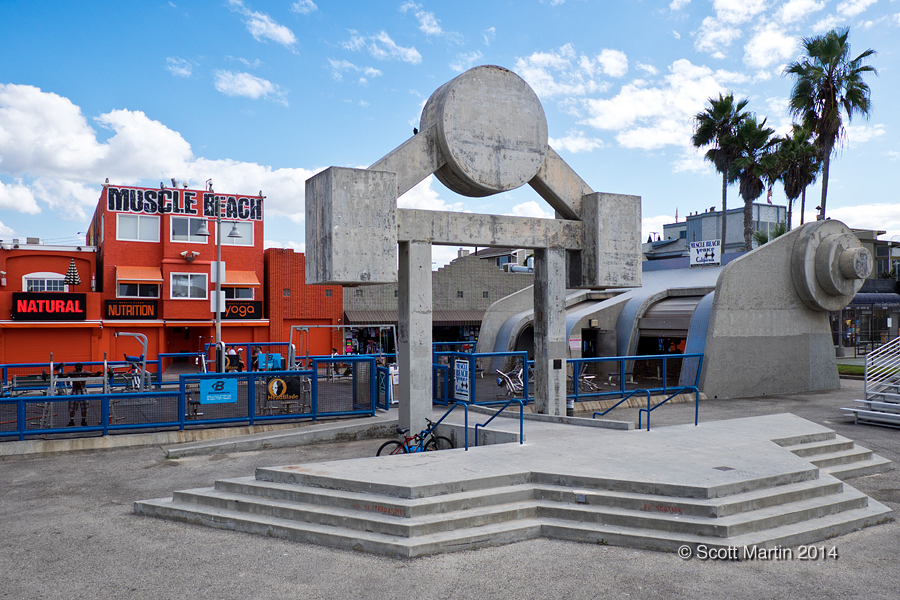
An artistic impression of the stylized concrete bar-bells at Muscle Beach.
Hundreds of small shopping stalls line the walkways of Venice Beach and there are no shortages of places to purchase anything that has to do with life on the beach. Sunglasses anyone?
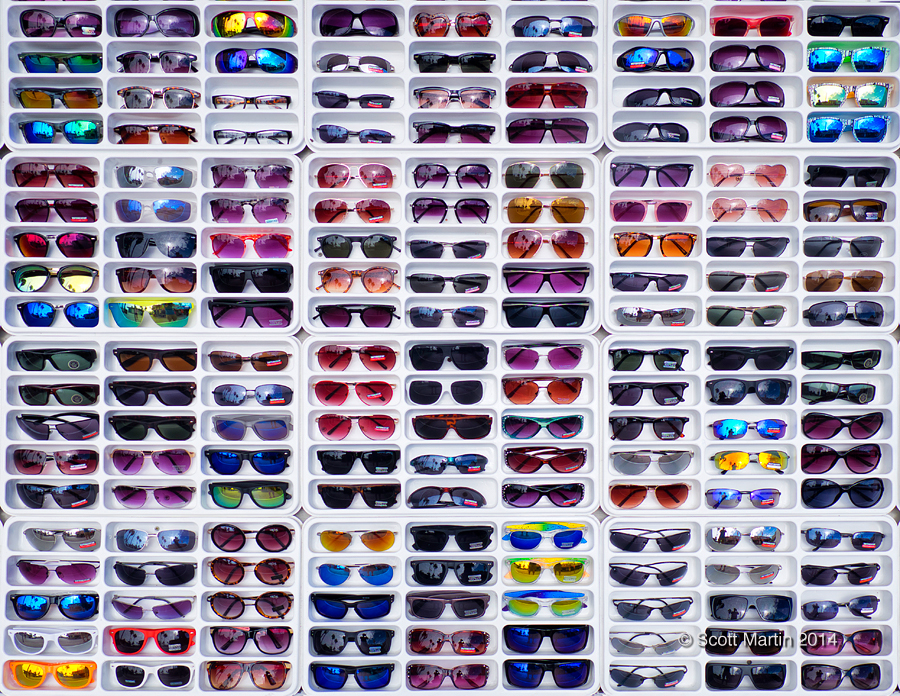
The California Coastal Beaches are exceedingly wide with perfect soft sand, so beach volleyball courts abound. At Venice Beach there are also expansive skate parks and paddle ball courts, but long before these were popular, Venice Beach had hand ball courts pictured below.
Just a quick photographic aside re these two pics of the hand ball courts. Always think about the foreground (and back ground) elements of every image you take. Doing so will improve your skills immeasurably. Although these two images will never be more than snapshots in our travel album, I waited for a number of minutes in both cases for cyclists to pass through the frame and exposed the image when they were positioned where I wanted them compositionally. The cyclists are not the object of the image but add a touch to the final result that makes the whole image a little more interesting.
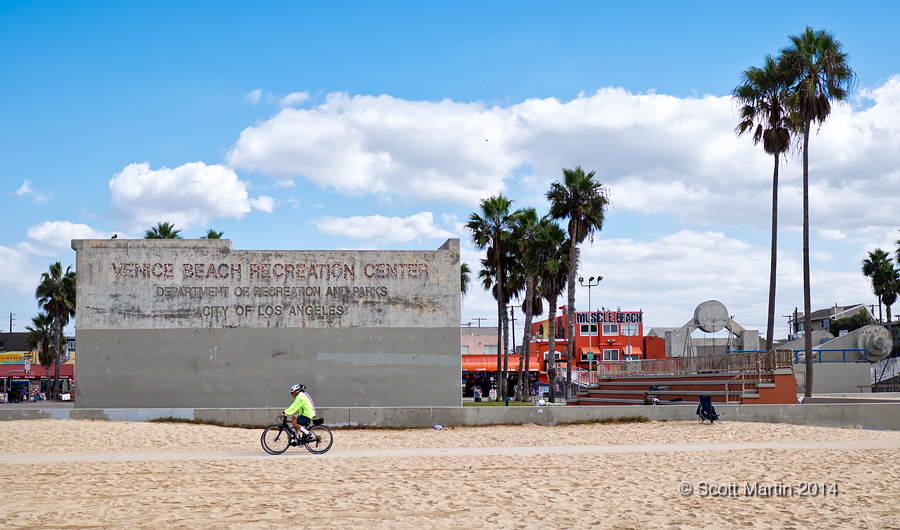
The ever present California surfer.
I think I’d rather be swimming.
The Venice Beach area is rather devoid of graffiti, except in the designated graffiti area in which every inch of available real estate is tagged.
The Santa Monica Pier immediately north of Venice Beach.
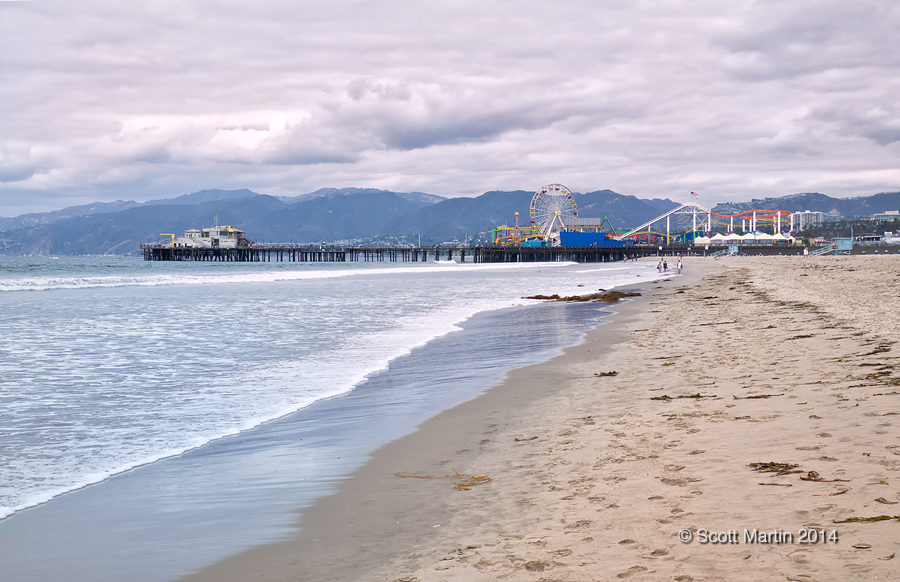
The famous Route 66 or Will Rogers Highway covers almost 4,000 km beginning in Chicago and ending on the Santa Monica Pier.
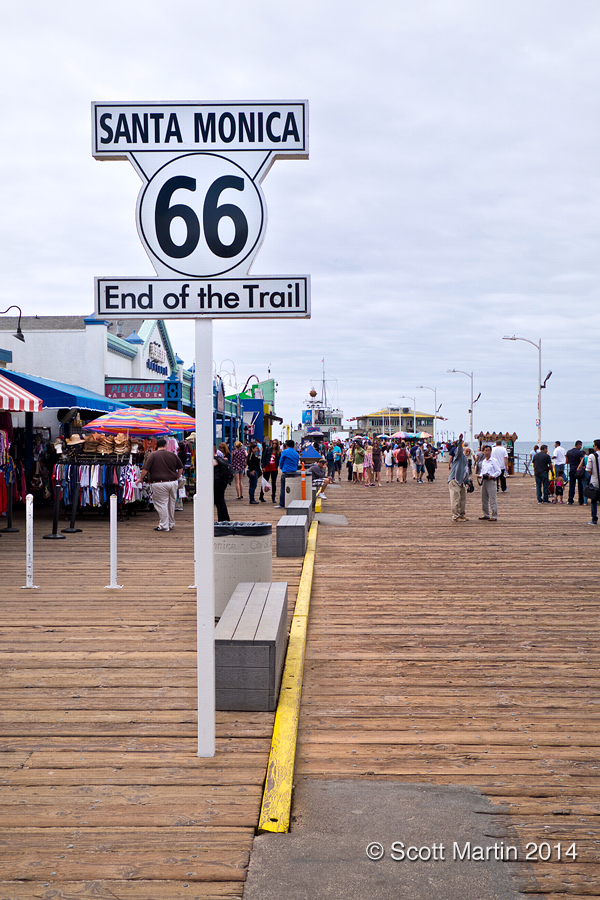
Looking out along the pier standing on the original site of Muscle Beach.
Heading north from Santa Monica you pass through Malibu with its amazing beach front properties which are home to the rich and famous. As you progress north along the Pacific Coast Highway from Malibu the urban areas transition into more natural terrain and you find one of California’s most recognized vistas, seen regularly on movies, TV shows and automobile commercials.
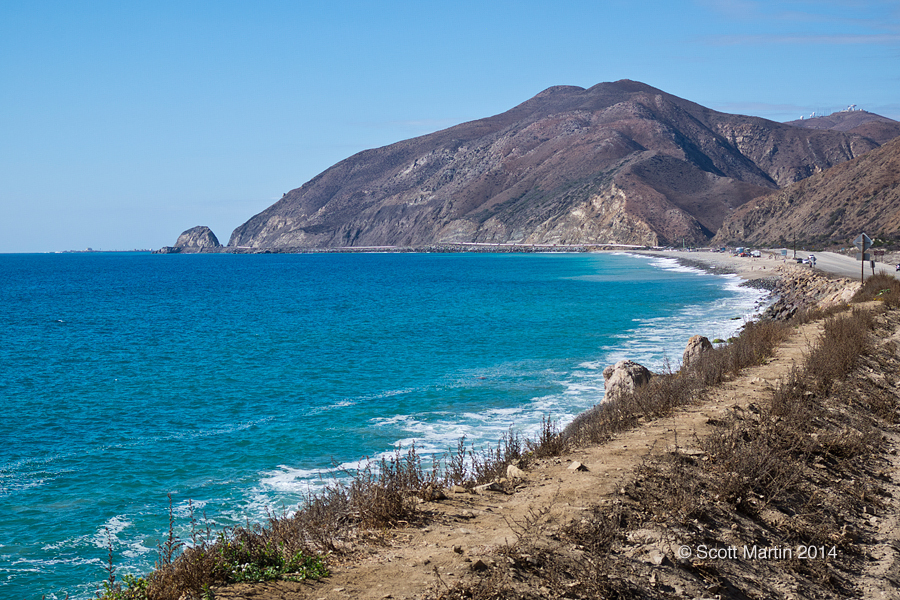
.
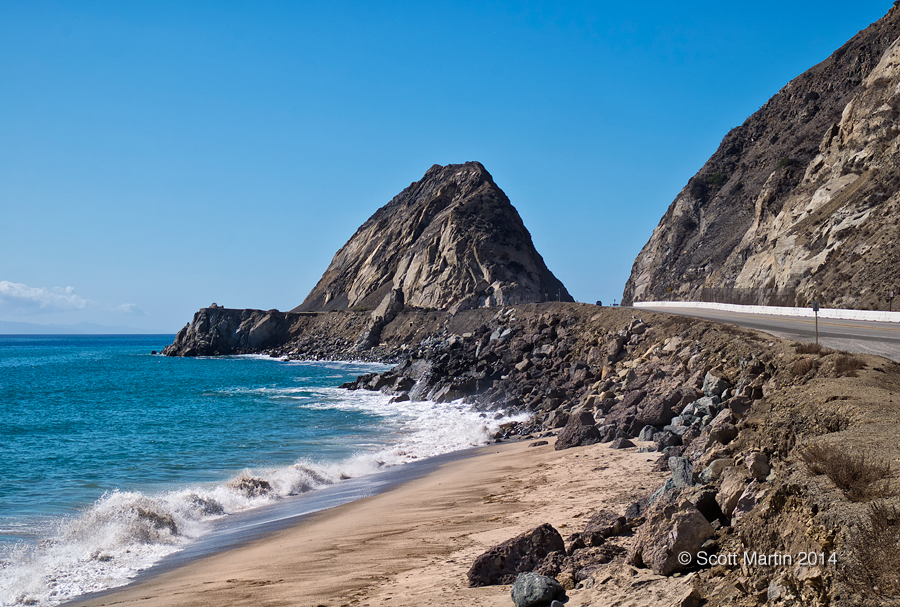
As this view is often associated with car scenes in movies and commercials, it was necessary to get an image from the road’s perspective. With Deb watching for cars I was able to catch a shot from the road.
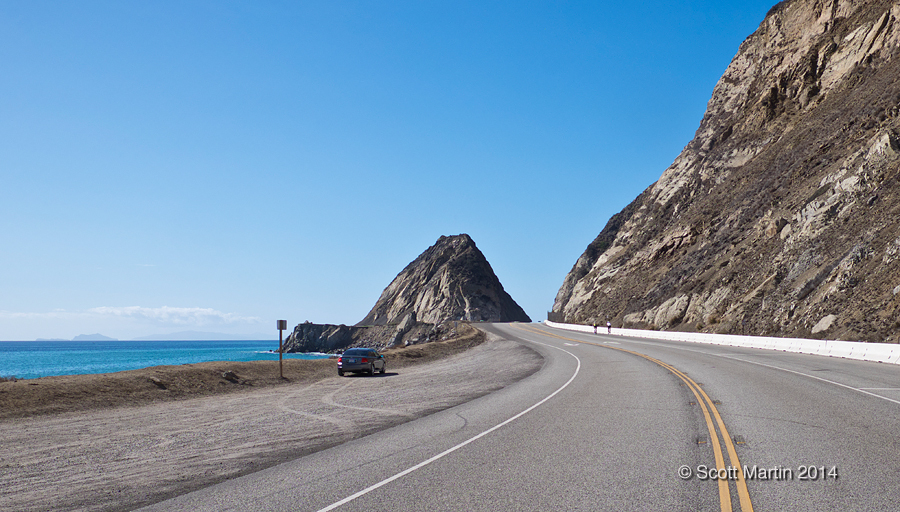
After spending most of the day on the beaches we headed up Sunset Boulevard from Malibu and walked around Rodeo Drive, the shopping area for the uber-rich which also makes it a great place for car watching 🙂
Here is a $2,000,000 Bugatti Veyron, the world’s fastest production car with over 1,000 horsepower and a top speed of 257 mph from its 8L V-16 engine with four turbo chargers.
Here is what it looks like from behind and also an image that is included solely for my great friend Arni, who I know will get a chuckle from this picture.
After looking but not buying anything on Rodeo Drive we headed for Palm Springs, a beautiful spot in the Sonoran Desert about 175 km east of Los Angeles in the Coachella Valley bounded on all sides by rugged mountain ranges. We arrived in Palm Springs well after dark, so the photography options were few, however here is a view of the entrance to our hotel, which was the perfect spot to stay. We had a cabana suite which was fabulous.
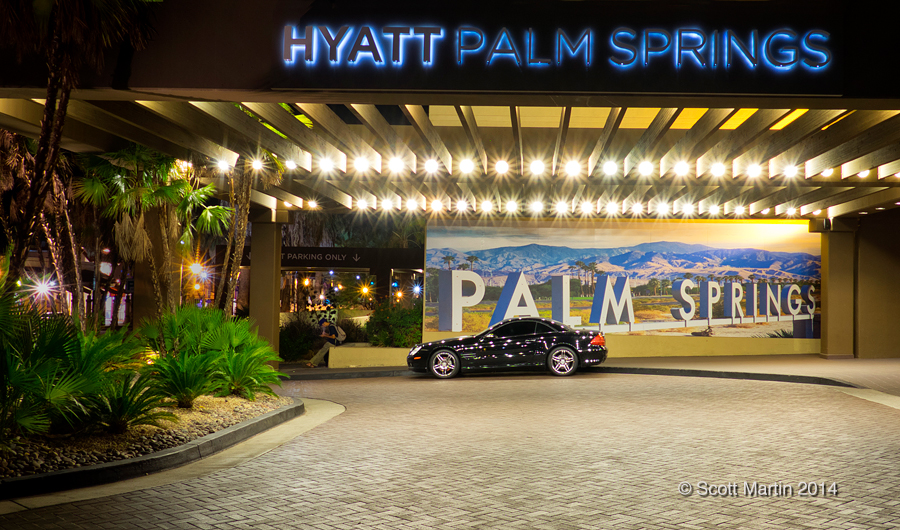
I was intrigued by the Palm Springs mural in the above shot so we set out to find it and fortunately it was very close to the entrance road to the Palm Springs Aerial Tramway which was on the agenda for our fist day’s activity.
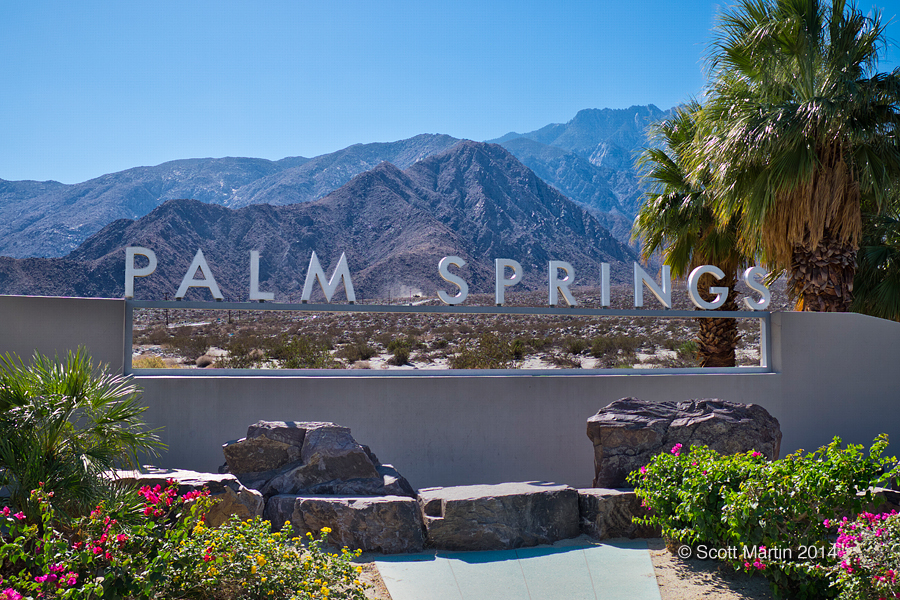
The Palm Springs Aerial Tramway is on the north side of Palm Springs and provides a wonderful eleven minute ride to a mountain peak which offers a 360° view of the region. The Tramway took over 26 months to construct beginning in 1961 and opening in June 1963. Since then over 20 million people have taken the trip to the peak. The gondolas used today are among the largest in the world with room for 80 passengers and the floor of the gondola rotates through two complete revolutions as you traverse the mountain.
The gondola docked at the summit, notice the water pouring out of the base of the tram. Hundreds of gallons of fresh water are taken to the top with every trip and stored in a large reservoir. The only source of water at the peak.
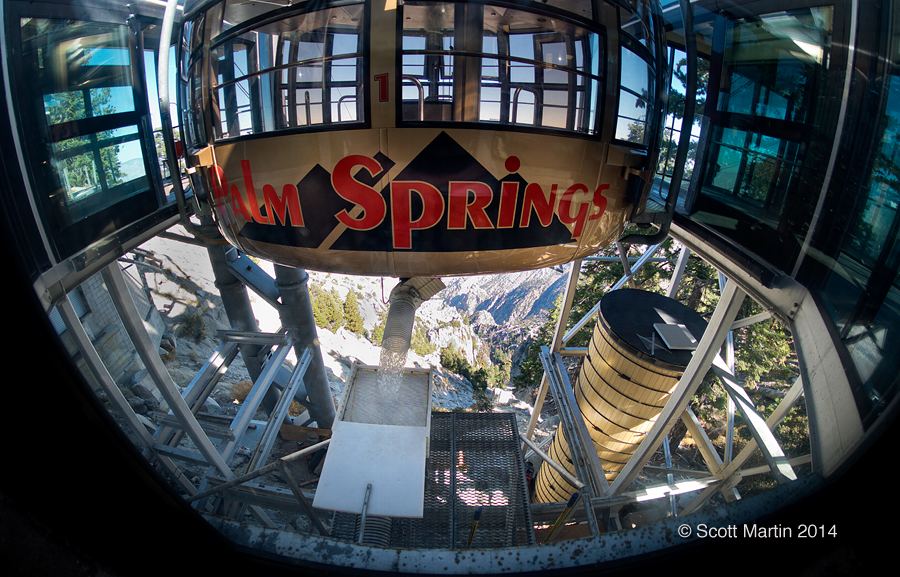
Looking down to the valley from the tram.
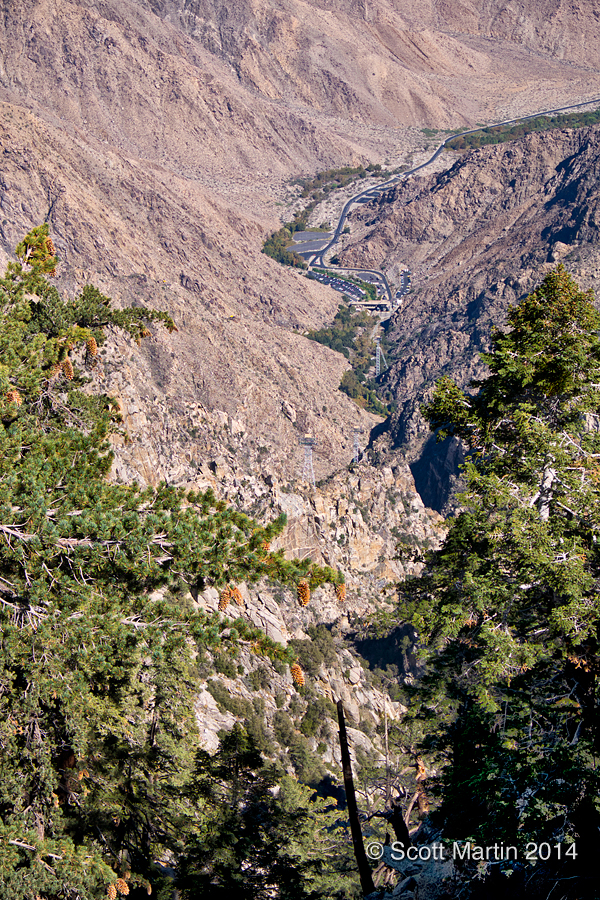
One of our favourite places to hike is in Joshua Tree National Park which is about an hours drive east of Palm Springs. This year we were able to watch a beautiful sunset inside the park in an area where the Mojave & Colorado Deserts converge. The first image is just after sundown with the silhouette of a Joshua Tree, which is not really a tree nor a cactus, but its own unique plant.
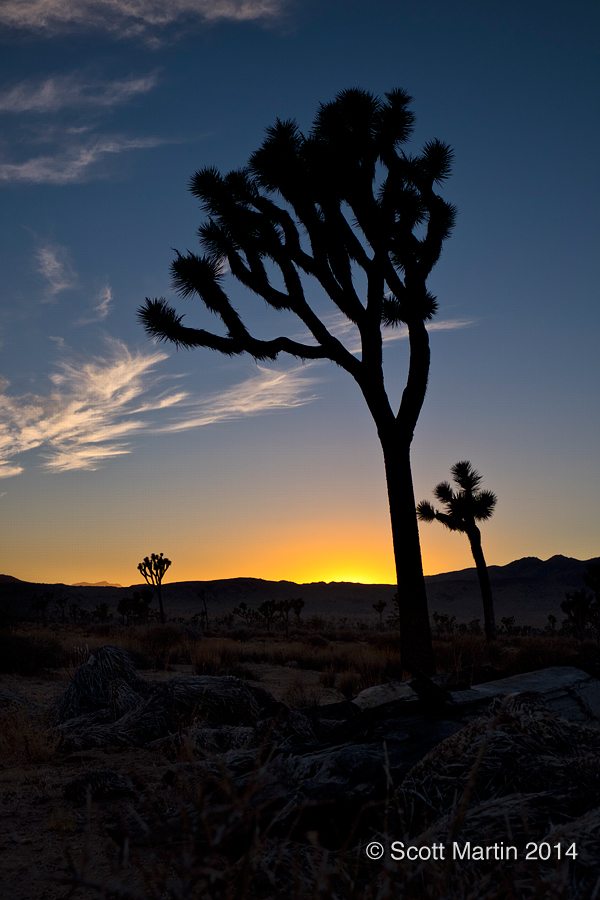
The use of a fisheye lens with its unique distortion pattern and 180° FOV (field of view) makes for some interesting cloud formations.
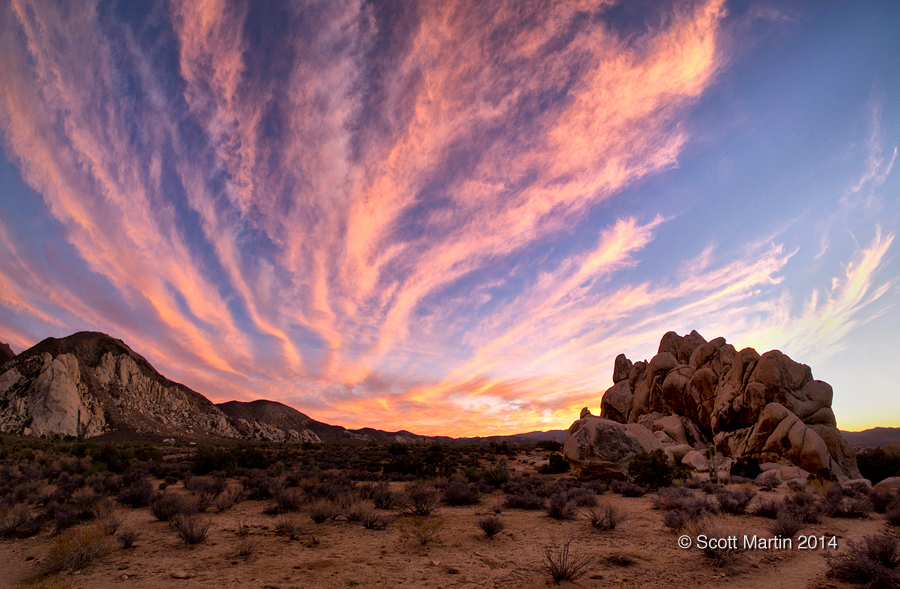
.
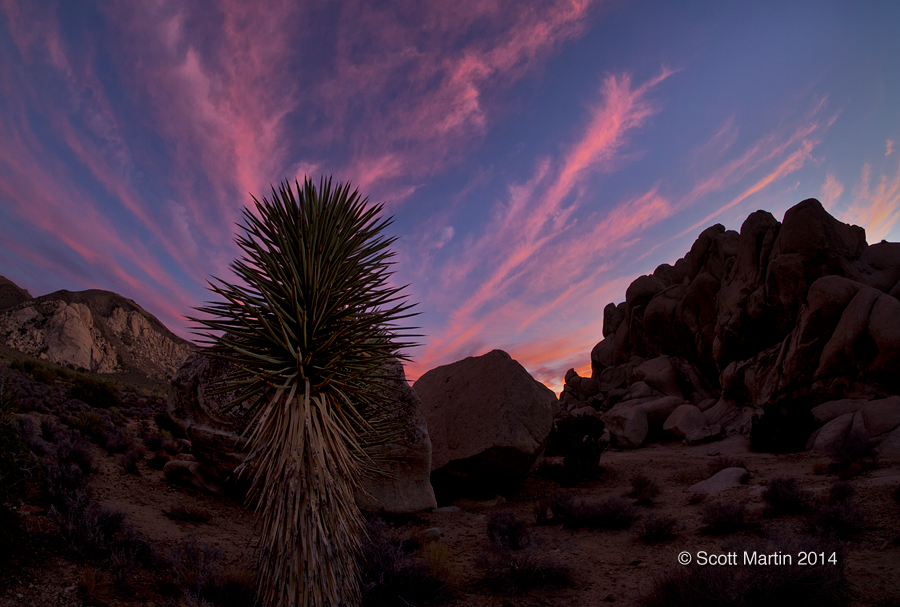
Leaving Joshua Tree National Park we headed west for the 150 km drive to Huntington Beach on the Pacific coast where we spent a couple of days enjoying walking the beaches and keeping our FitBits happy.
Sunrise is a very special part of each day, yet sadly an event that I miss other than while on vacation. You just know its going to be a good day when you take the time to watch the sunrise….its kind of like watching God turn the lights on for another day He has planned for you. Here is the view from our hotel room at the Hilton on Huntington Beach.
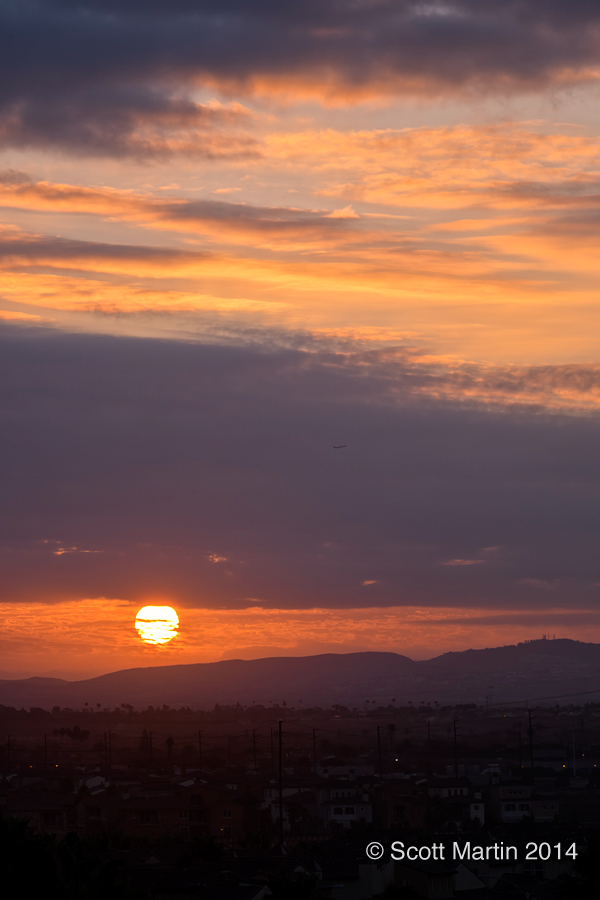
The landmark that dominates Huntington Beach is its large pier that extends well it into the Pacific Ocean and provides the perfect location for Ruby’s restaurant at the very western most reach of the pier.
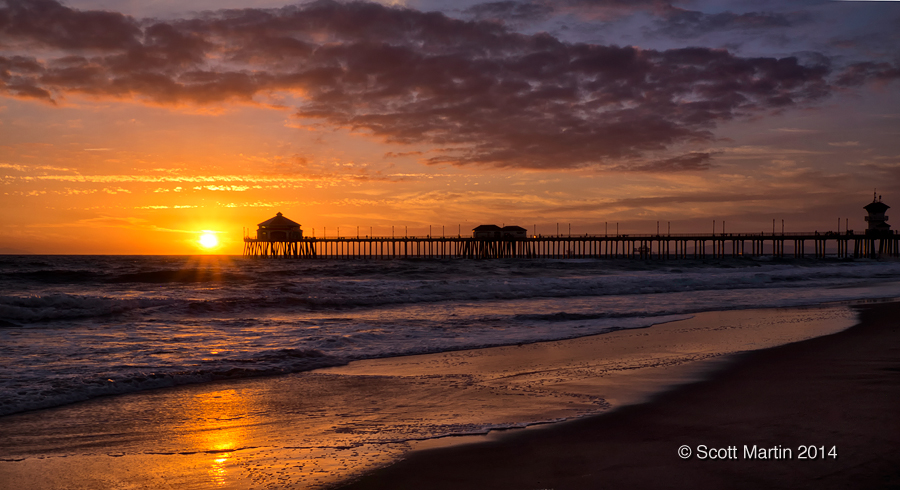
Fishermen and women line the end of the pier and although they are perched some thirty feet above the water they quite adeptly retrieve their catch although the ever-present gulls will try to take the fish from the lines while they are being reeled in. If you are an expert you can handle five lines simultaneously!
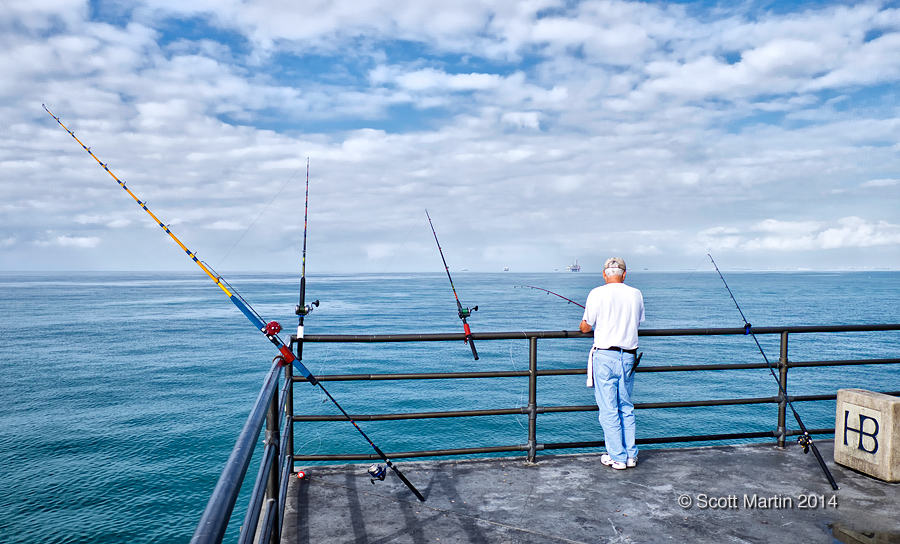
Walking along the beach beneath the pier also provided for some interesting photographic opportunities. The next two images were taken from pretty much the exact same spot, the only variable being the focal length of the lens. The first was taken with an 8mm fisheye lens and the second with a 55mm lens. They serve as a good example to always carry a number of lenses with you and when you find an interesting subject take some time to experiment with different focal lengths. The results can be surprising and tell very different stories. (A cautionary note; always be careful and minimize the likelihood of letting salt spray and sand get at your sensor when changing lenses. Face your back to the water and the wind and use a towel to create a tent around the camera. Face the camera body downwards and minimize the time the camera and lenses will be exposed to the air. Over the years Deb and I have developed a very efficient ‘four handed’ system for quickly changing lenses).
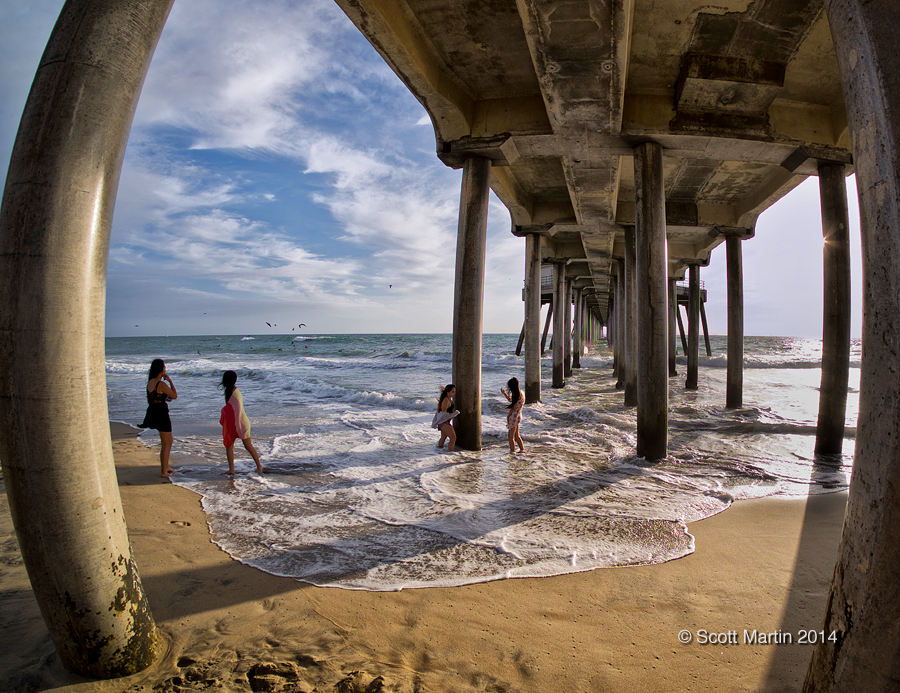
.
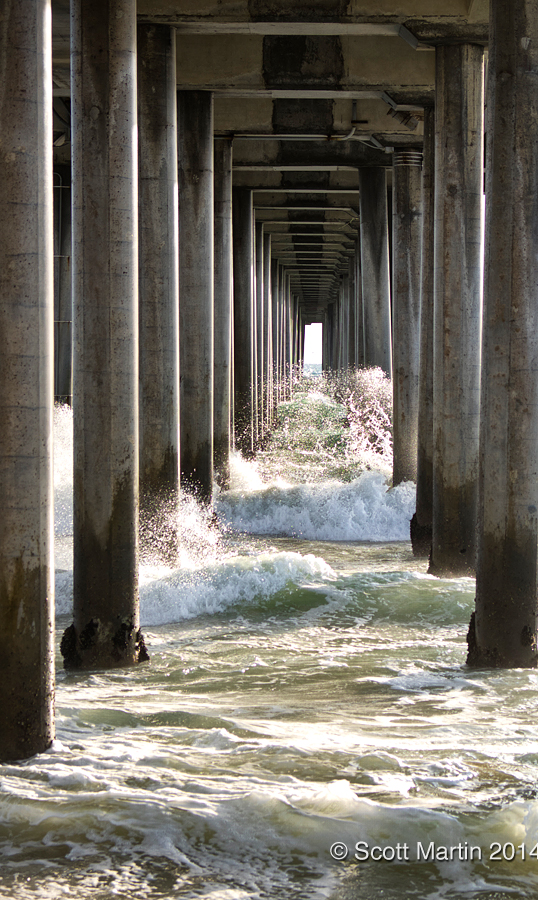
Just after sunset.
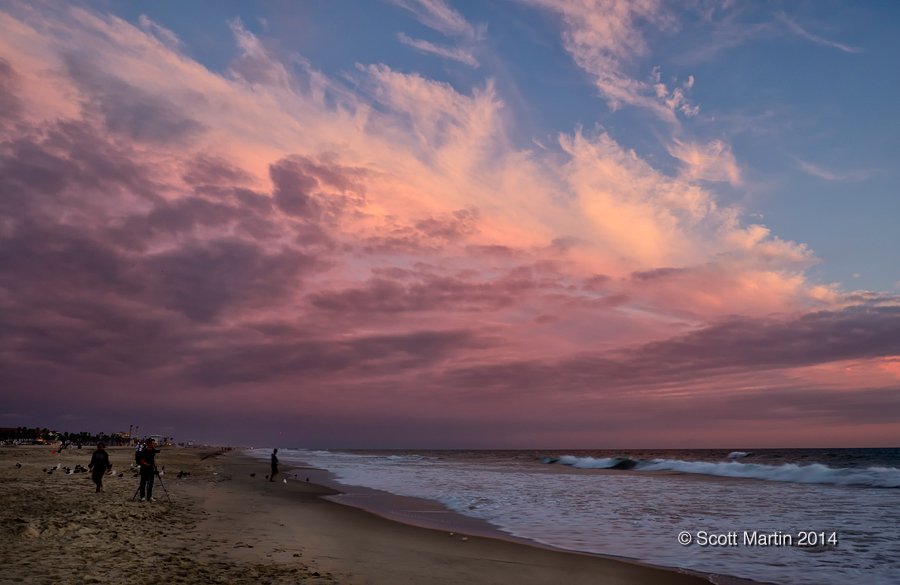
….and a few more of the pier.
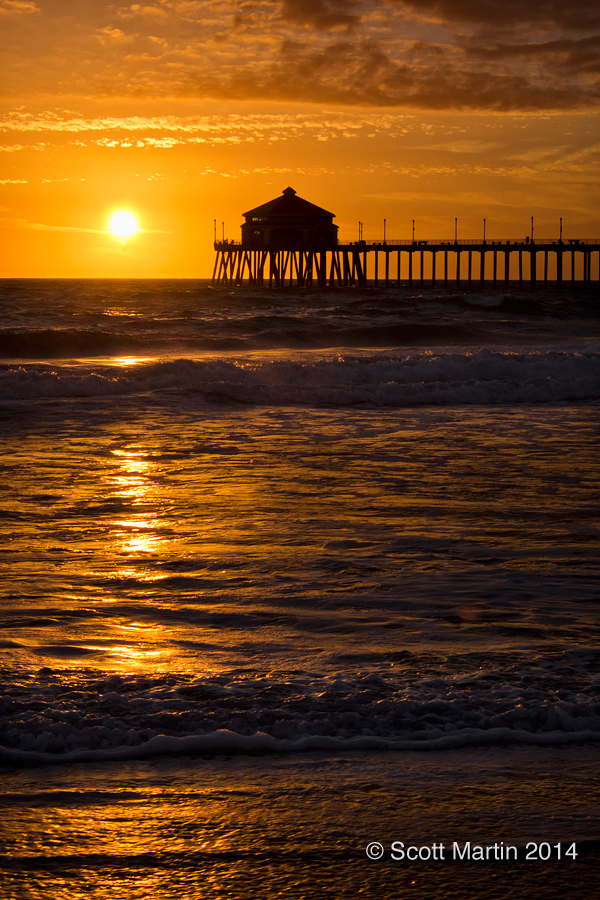
.
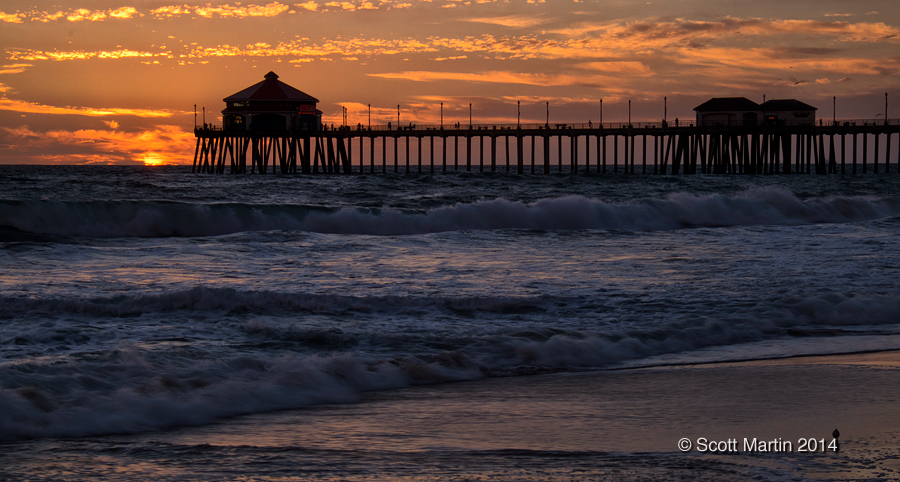
Long after the sun has set. Use very small apertures (f18-22) to create the starburst effect on the floodlights. This requires long time exposures which also has the added benefit of blurring the water which helps soften the fore ground and creates reflections on the water. The number of rays emanating from the light sources is determined by the number of blades in the diaphragm of the lens (which are used to set the aperture of the lens). With lenses having an even number of blades, there is one ray produced per blade, while an odd number of blades produces two rays per blade. If you take time to count the rays in the following images you will see there are 14 rays around each light source created by the seven diaphragmatic blades in the Fuji XF55-200mm lens I was using. Have a look in the Naturescapes Gallery for a similar image taken a few years ago of the same pier with the Canon 24-105mm lens which has eight diaphragm blades producing eight rays from each light source. You will notice the effect is quite different, so based on your preference you may want to inquire as to the number of blades in the diaphragm of the next lens you buy….or better yet buy two similar focal length lenses, one with an even number of blades and one with an odd number!!
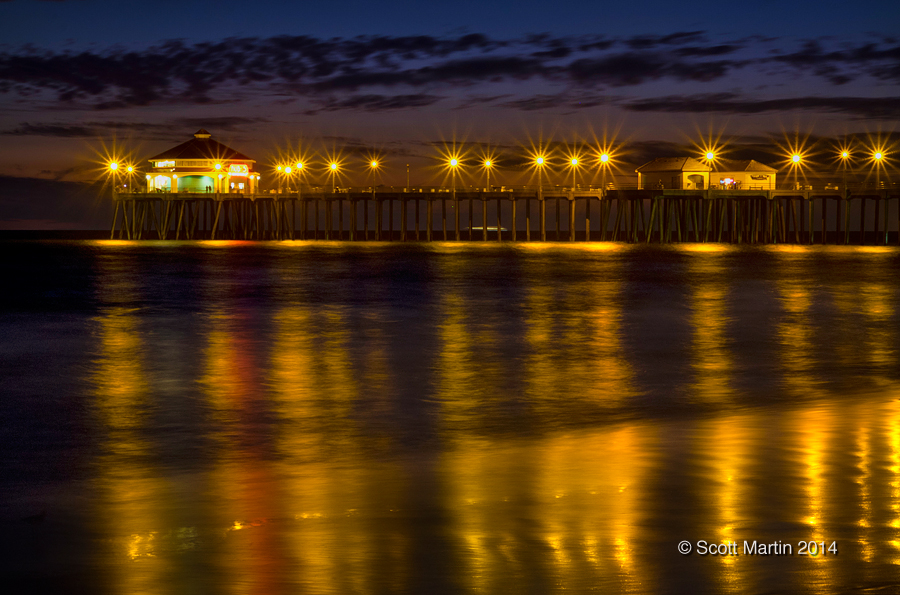
.
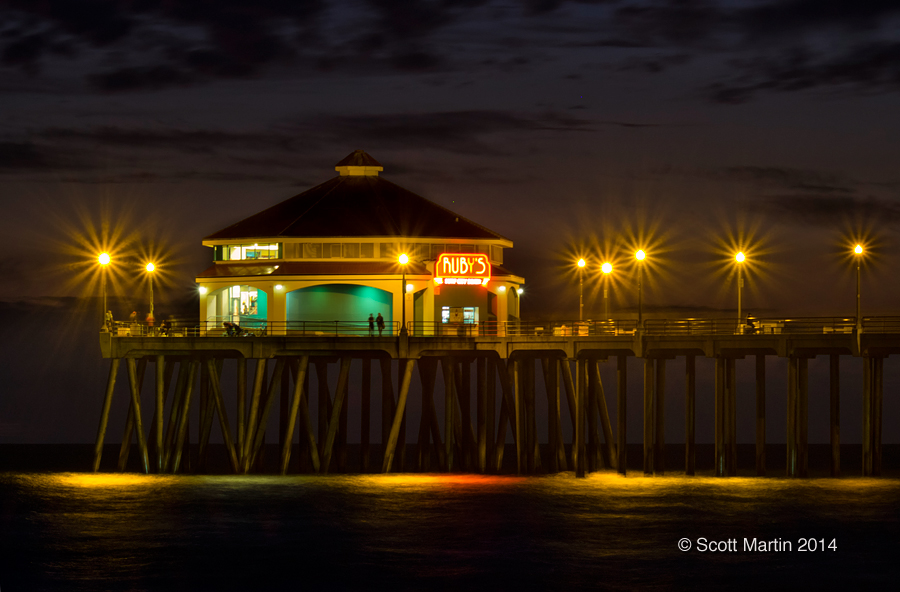
.
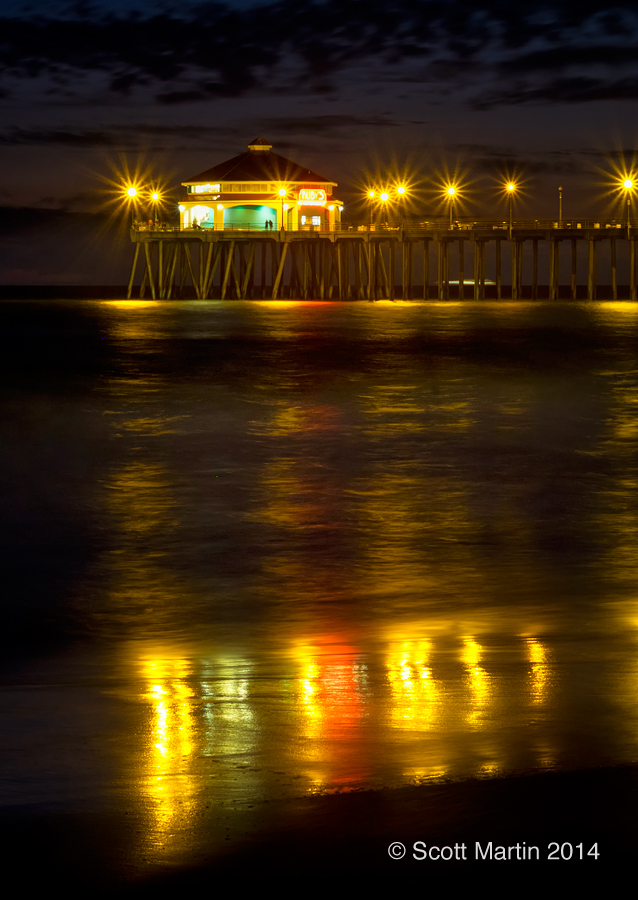
As mentioned earlier this trip was the first time I’d ever travelled without any Canon gear, which also means no specialized equipment for bird photography. For this Californian excursion all bird photography would be with the Fuji X-E2 and the 55-200mm zoom lens. We headed north to the Bolsa Chica Conservancy looking for some birds to practice with and although it was a quiet birding day there were a number of Brown Pelicans fishing in the wetlands.
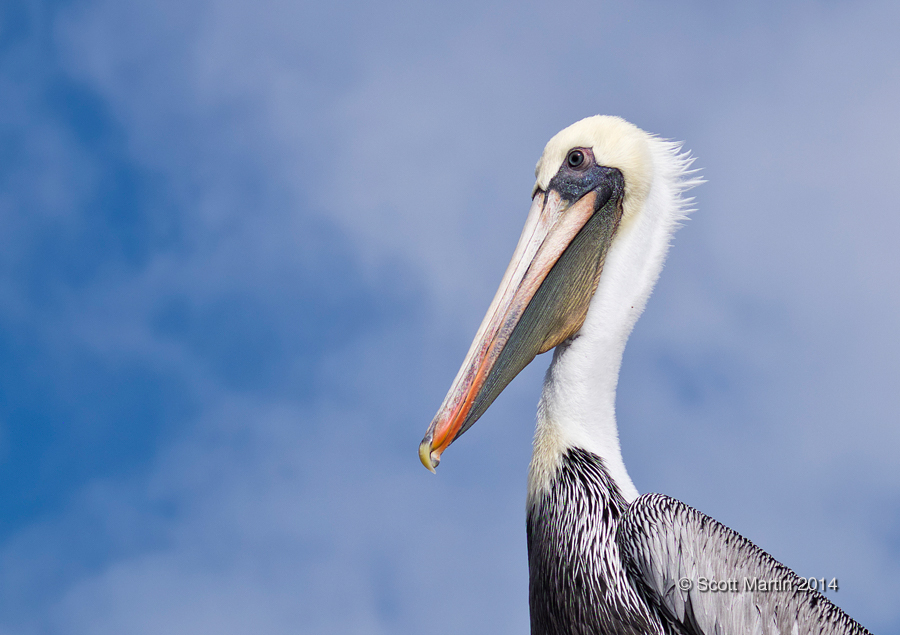
Although the keeper rate was low compared to the Canon, the slow flying Pelicans did afford a few decent in flight photo ops.
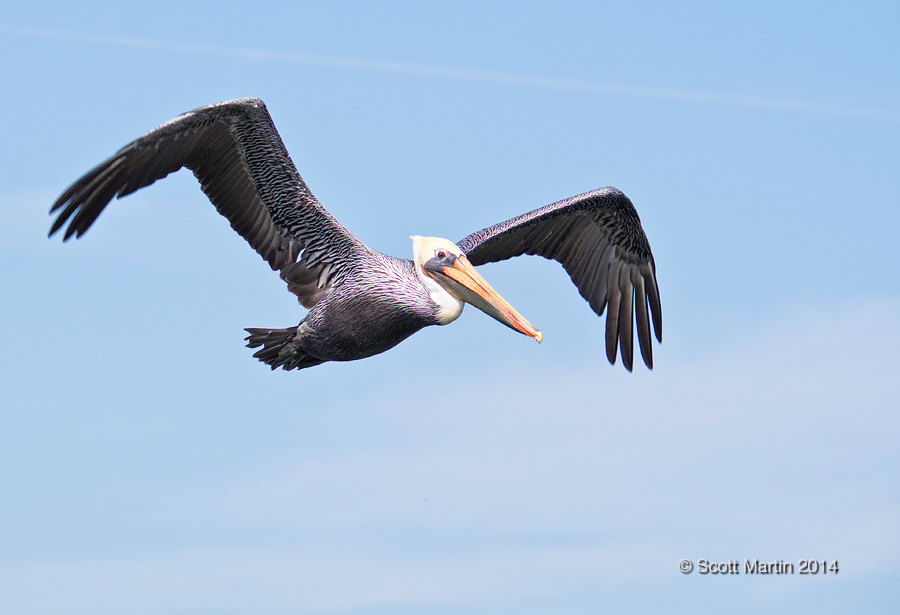
.
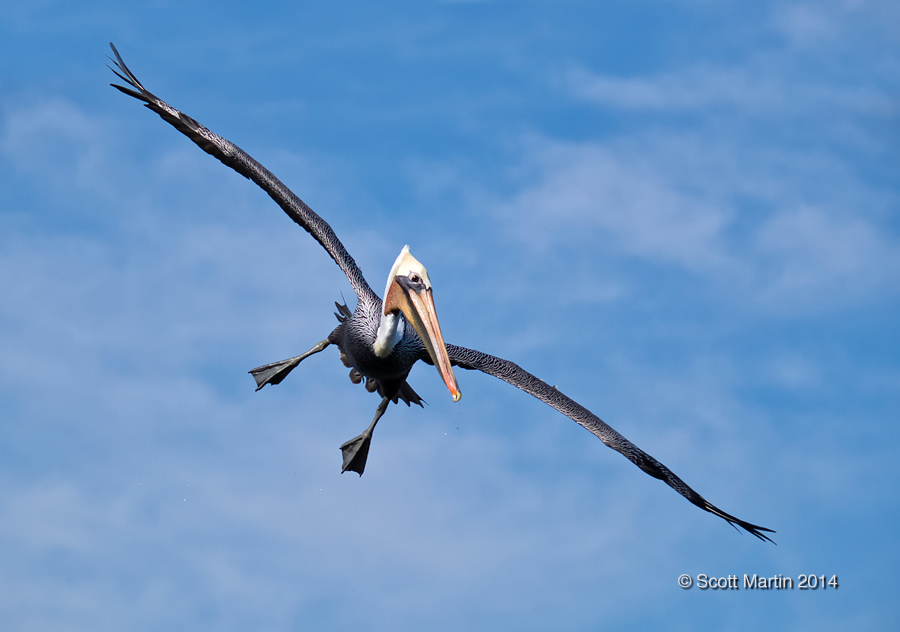
We had a wonderful few days in California and look forward to our next trip west. Travelling with the new Fuji mirrorless camera system exceeded my expectations and I trust this blog post has given you an idea of capabilities of this type of gear. Images in this post ranged from 8-200mm focal lengths and covered a wide range of photographic challenges. I’m not of the opinion that this new breed of camera will replace the DSLR, however it does provide a superb travel gear system that is fully able to meet virtually every photographic challenge and do so with gear that is less conspicuous, much lighter and yet retains superb image quality.
I’m still a Canon guy but do like the Fuji….a lot!
Although this last shot was taken through some dirty glass windows at LAX, Deb & I enjoyed our last sunrise in California while waiting to board our plane for the rather long flight home.

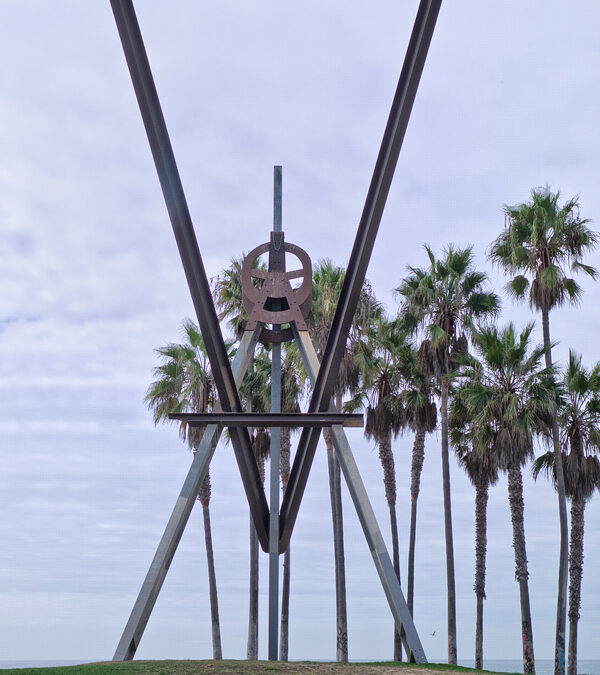
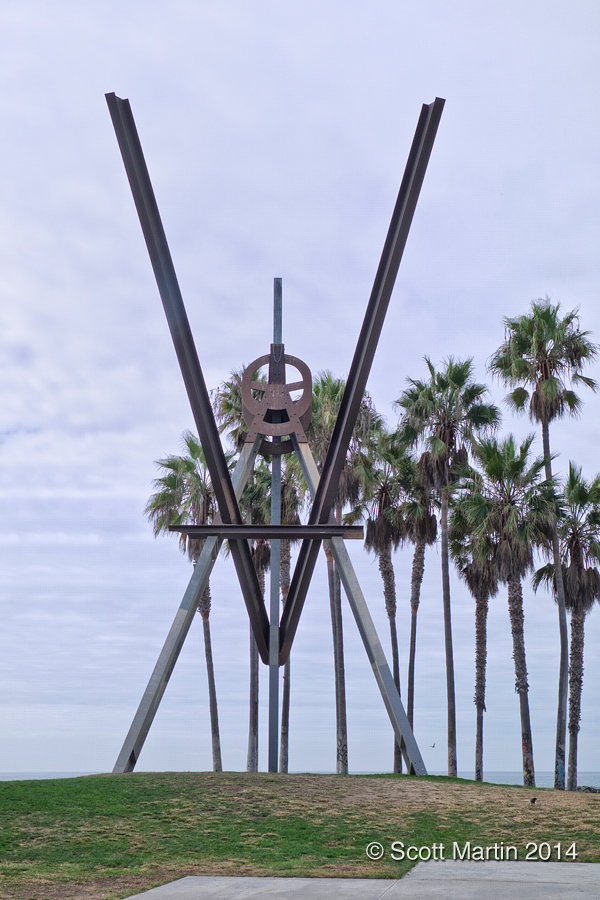
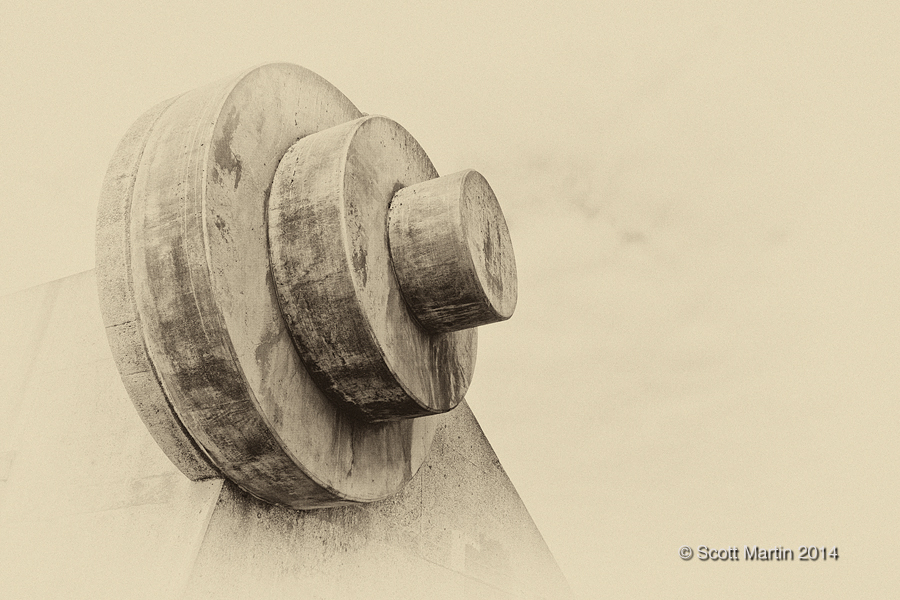
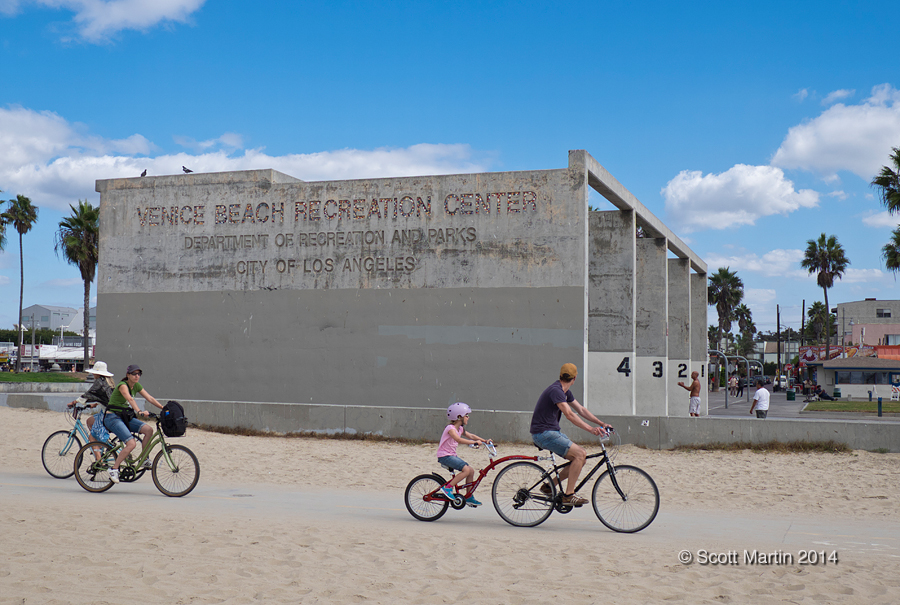
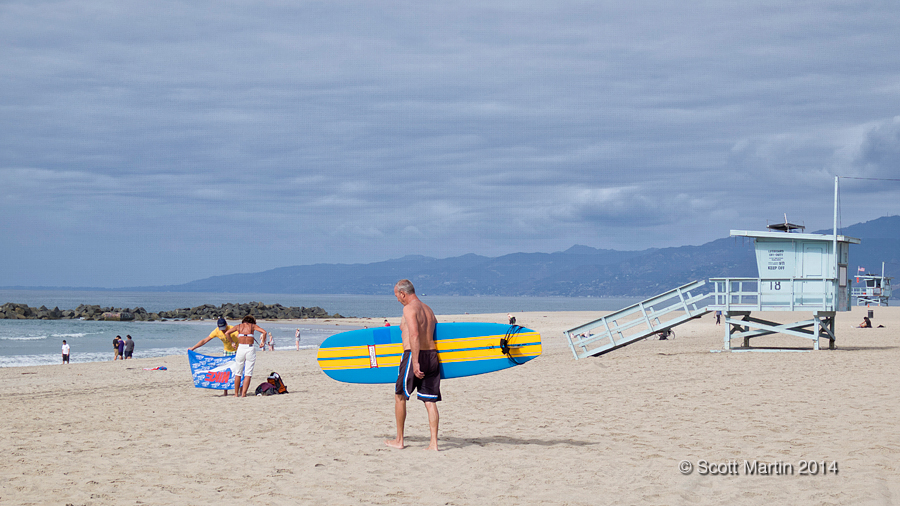
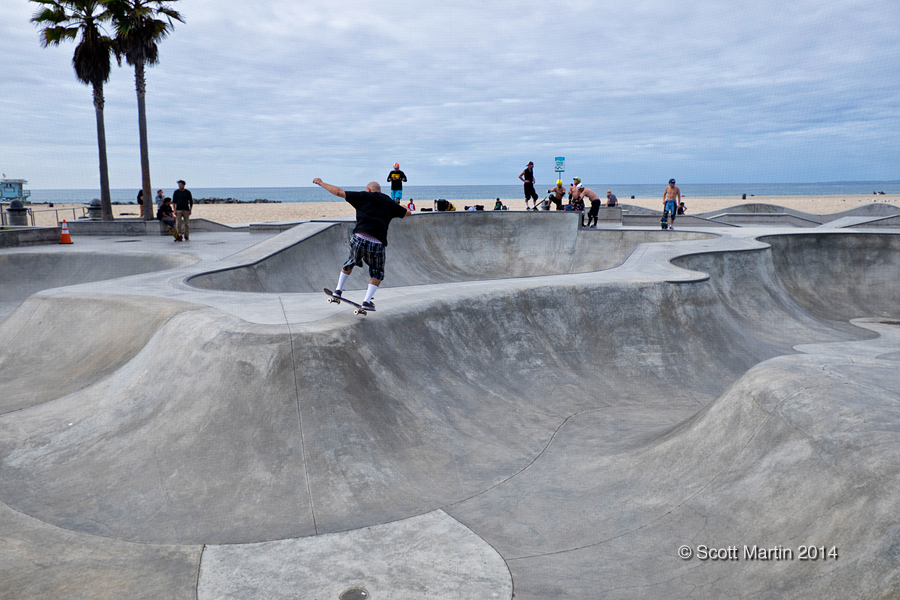
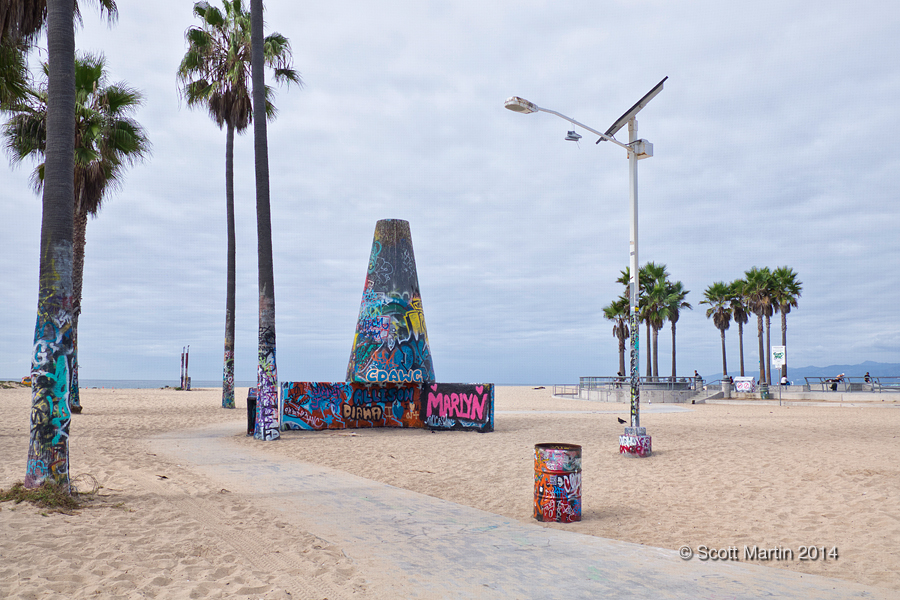
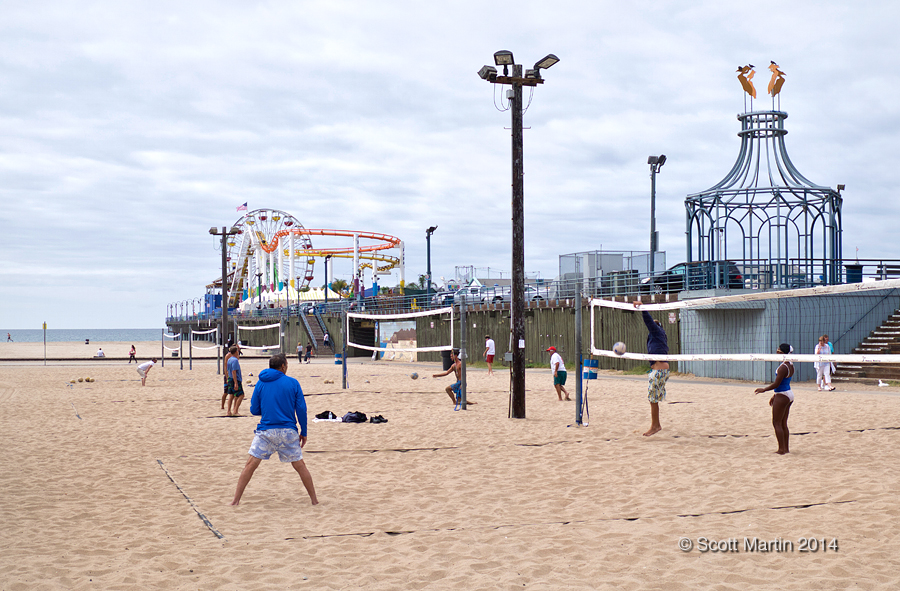
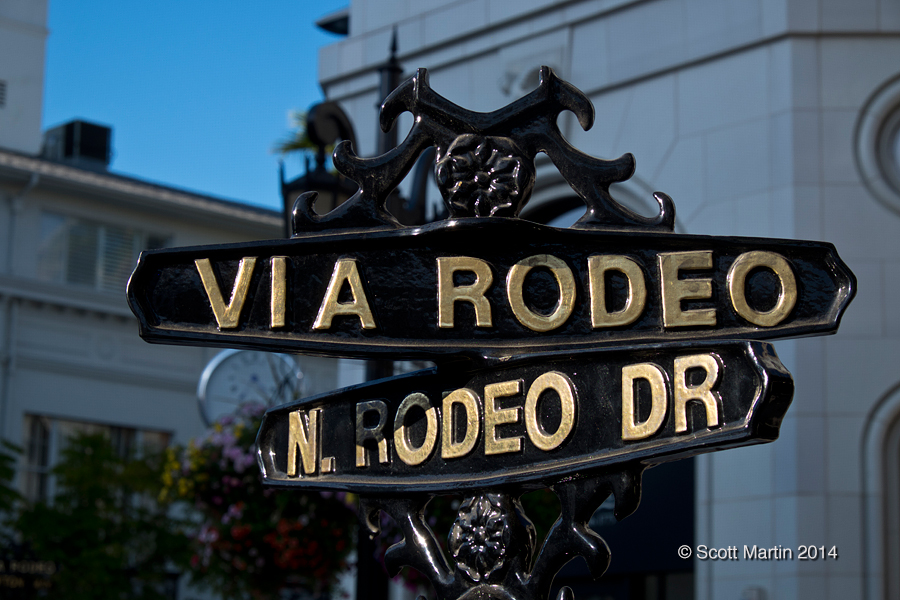
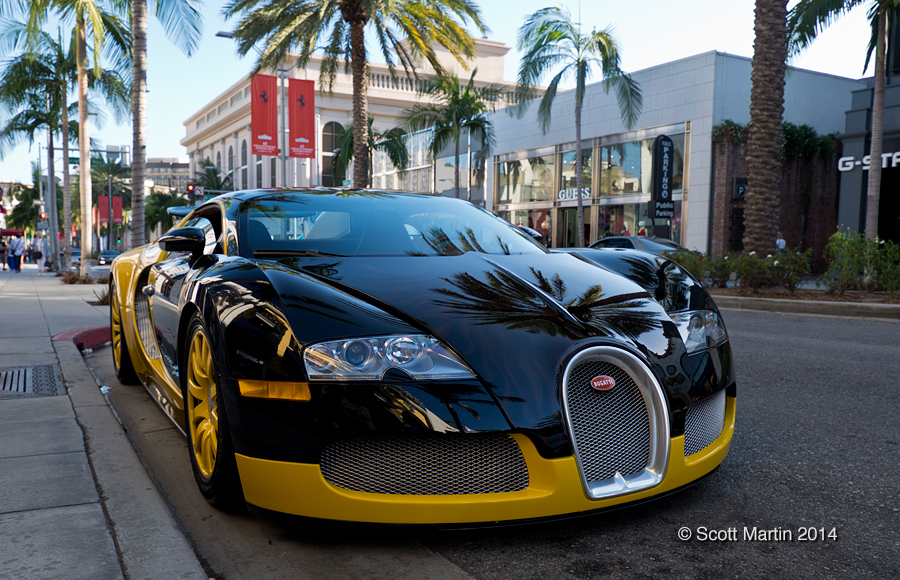
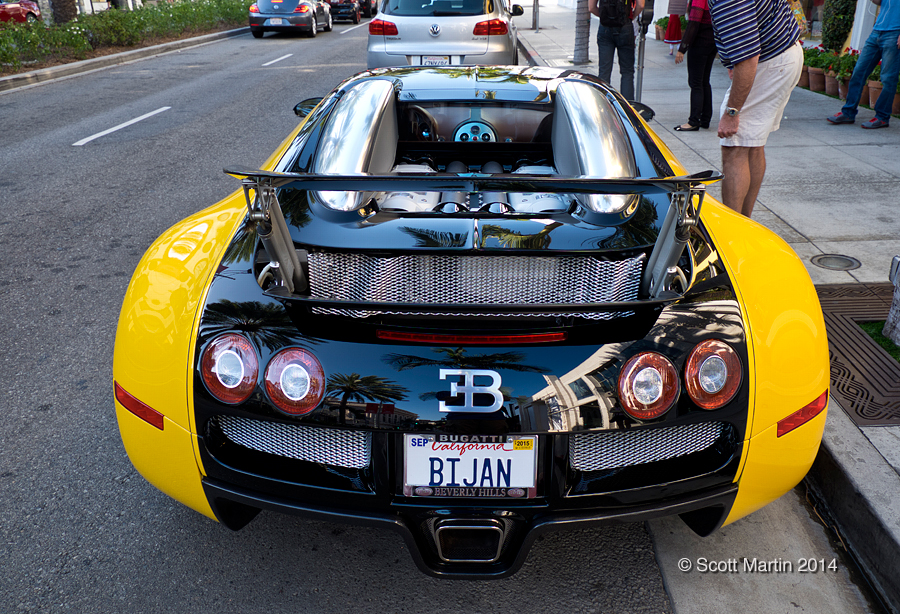
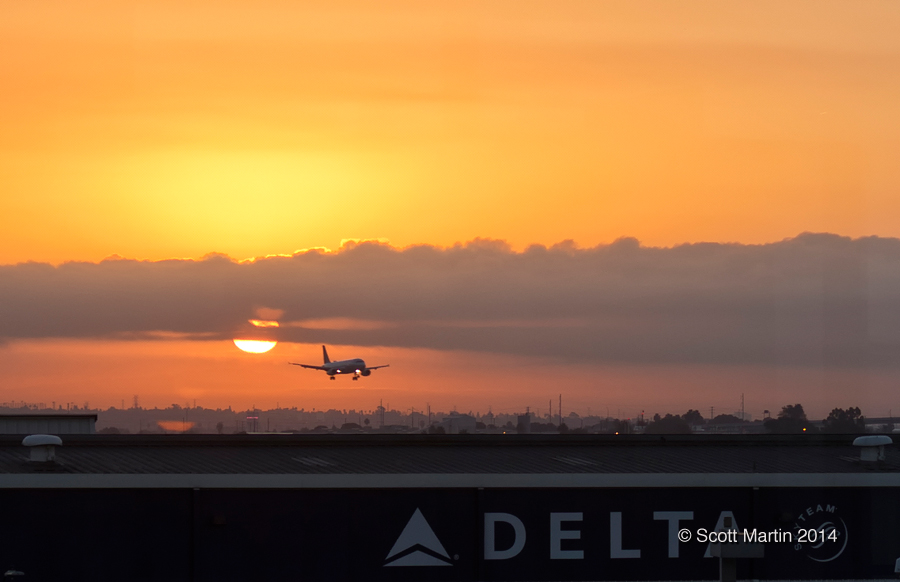
Have been waiting for this post Scott to see how the new gear performed. Have to say they are pretty impressive but then again they are in a wonderful set of hands. Loved them mate
Thanks Rob & my head is swelling 🙂 The Fuji really is a great travel set up offering excellent IQ with the light weight and compact size that makes carrying it all day a pleasure.
Scott, You will have it mastered in no time. Any further upgrades are off the list for me having recently bought the 1DX. Now trying to work out what gear I will take to the top end of Aus in May
This is quite a multifunctional post Scott, which includes the highly positive review of the Fuji and a wonderful collection of images of the Huntington Beach area. Of course, as you predicted, I do like the image with the 3 VW’s, the Beetle, the Golf and Bugati 😉
Thanks Arni and I knew you and all the other VW afficionatos would enjoy all those fine VW products in the same frame! Happy New Year to you, Dianne & family.